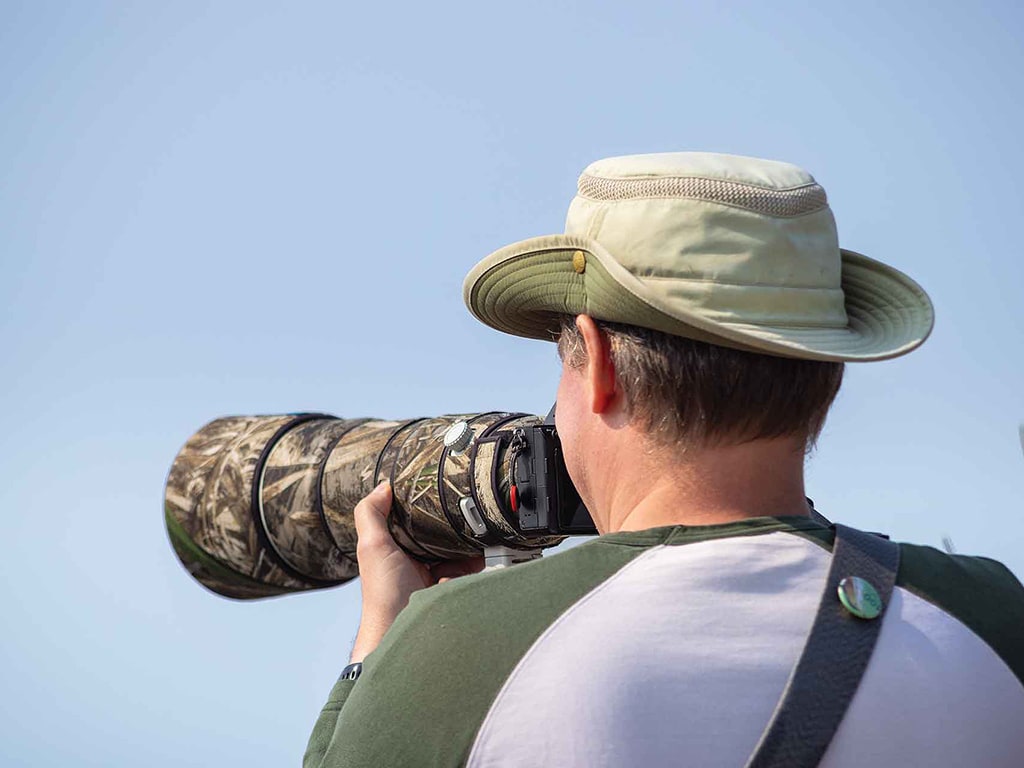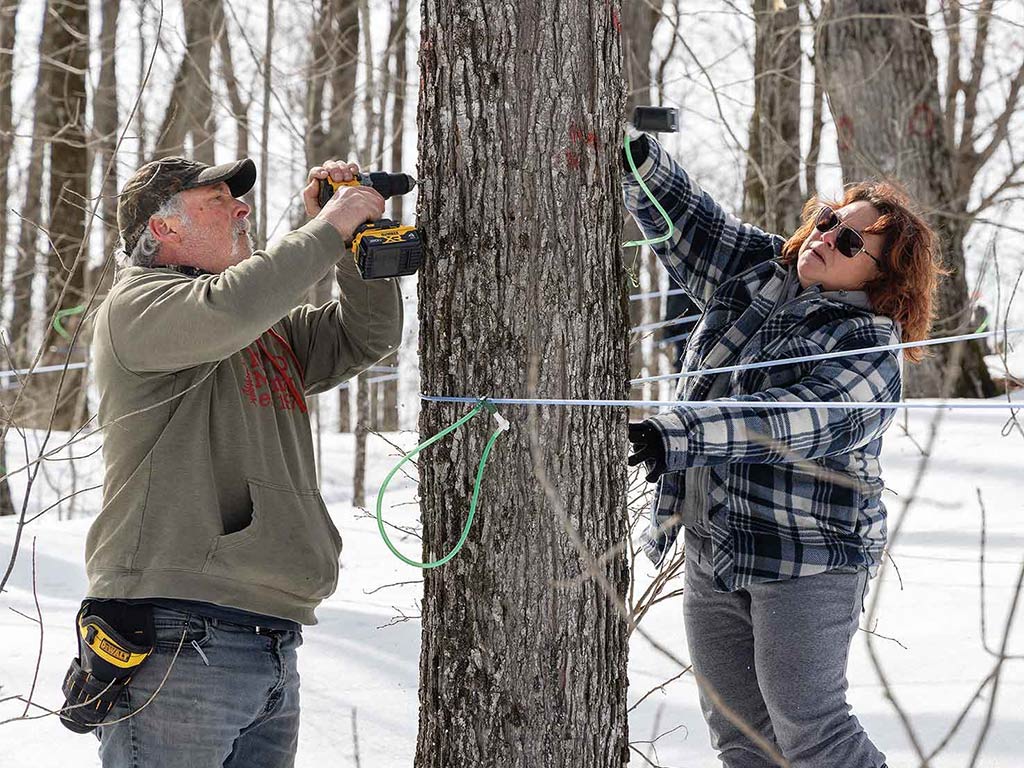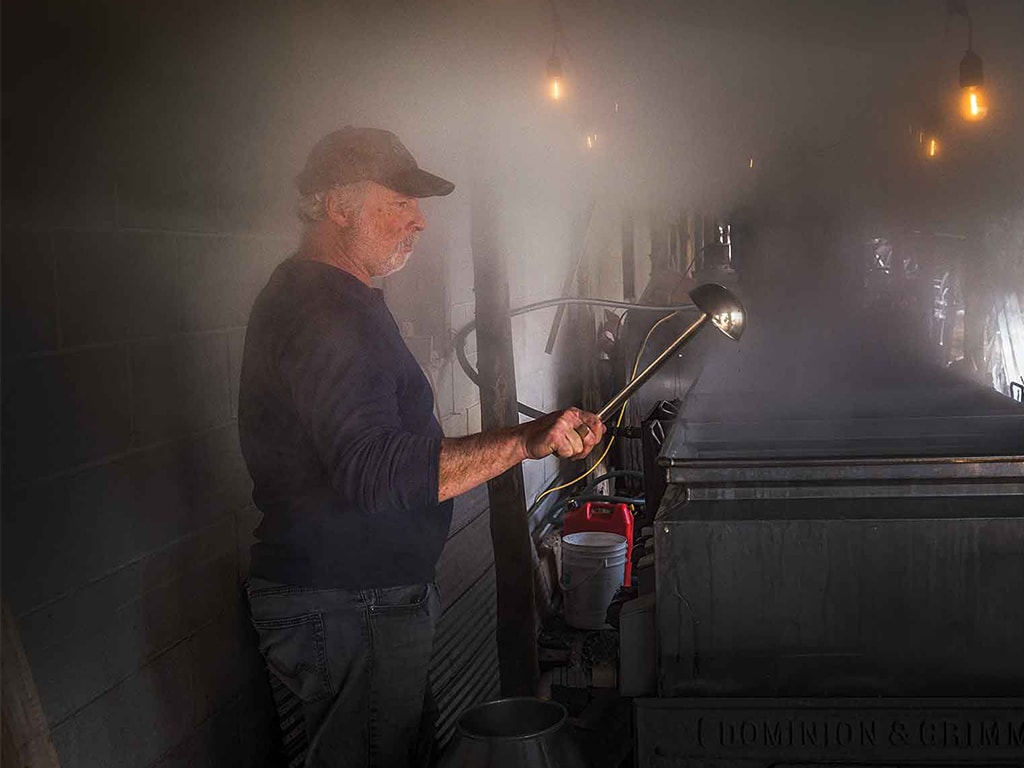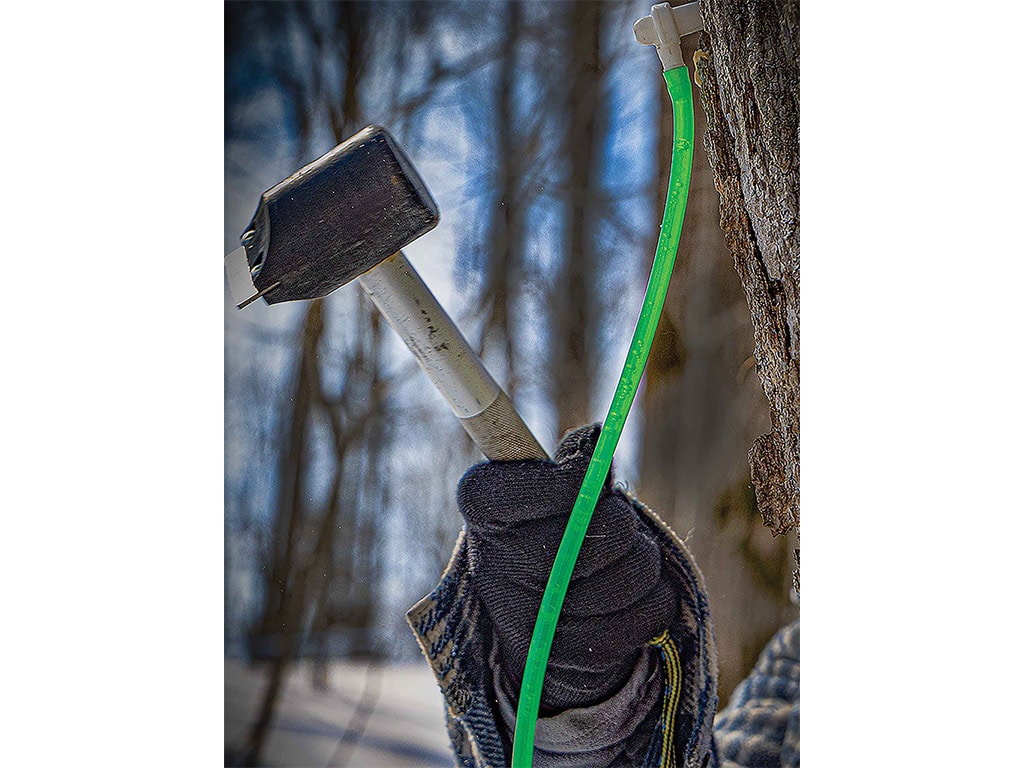Rural Living, Specialty/Niche April 01, 2024
For the Love of Syrup
by Lorne McClinton
Peter Freeman's and Danielle (Dani) Weber's sugar shack near Elginburg, Ontario, is a magical place during the maple syrup harvest (sugaring off) in March and early April. It's a feast for the senses. Shafts of light stream through cracks in the boards and pierce the clouds of steam billowing off the evaporator. There's an intoxicating sugary sweet scent of maple syrup in the air. The heat, combined with the sound of the roaring wood fire and boiling sap in the evaporator is soothing. The overall feel to the place is as comforting as a hug.
Out in the bush. It's March and thousands of hobby maple syrup producers in central and eastern Canada and the northeastern United States are out in their sugar bush making syrup. Some tap a dozen trees, others tap hundreds. Sales of the syrups they make will generate a bit of income, but like most hobbies, making money isn't the point. It's done for their love of tradition, spending time outdoors in the woods and tending their boiler. And of course, for the love of syrup.
"March is traditionally a grayer, soggier month and lots have the winter blues," Freeman says. "Everything's brown and slushy in the city. So, being back in the bush, where it's still white and clean, tapping trees and getting the lines going, is a big part of the attraction. It's always a nice time of year, before long the red wing blackbirds start to show up, and all of a sudden, you're hearing all those first sounds of spring. But I get the same amount of pleasure doing the boiling part, stoking the fire, taking syrup off. That's pretty satisfying too."
Weber is the fourth generation of her family to make syrup on her family's sugar bush. She has fond memories of her times out in the woods as a child.
"I think about my dad, my grandfather, and great grandfather," Weber says. "It just really warms my heart that I am able and fortunate enough to carry on this family tradition."
Freeman started with his father in the 1970s. Over the years he grew to hate it.
"It was way too much work for a little kid," Freeman says. "We did about 300 taps back then, and dad was probably the only person who ever bought a 150-acre farm and never bought a tractor, a four-wheeler, or a snowmobile. So, everything was walking."
But making syrup got in their blood. The couple would often be unable to make any for years on end when they were busy with their careers, but it always intermittently kept calling them back to the bush. They moved back to Peter's family farm in 2018 and have been making syrup ever since.
Above. Usually Freeman and Weber don't head out into the woods to tap their sugar maples until early March but they've found the season has slowly been getting earlier over time. Experienced syrup makers like Freeman can tell if it's ready by how it flows off a ladle or spatula. Freeman and Weber use plastic spiles and vacuum lines to collect sap. Freeman's and Weber's 300 trees can produce 2000 liters of sap in a day and a half. The heat coming off the evaporator keeps the sugar shack comfortably warm.
Tapping 300 trees. Peter and Dani tapped 300 trees in 2023. This involves drilling a hole into the tree and inserting a spile (a spout that draws off the sap). Traditionalists use metal ones and collect the sap in hanging buckets. Most, like Freeman and Weber, have moved away from this laborious process and use plastic spiles and vacuum lines now.
"We drill a 3/16th hole, insert a plastic spile and attach a plastic dropline to it. The sap flows from the dropline to a collection line and finally to the main line which takes the sap to the collection tank. The 3/16 line is small enough that it creates its own vacuum. Every foot drop in elevation creates a foot pound of vacuum. There's no hauling sap out anymore."
Climate change. Sap starts to flow when the spring thaws arrive. Ideal sugaring off conditions occur when the temperatures drop to -3°C, a few degrees below freezing, at night and +4°C during the day. Freeman finds the temperature swings are much greater now and blames climate change. He says the sugaring season starts two weeks earlier now than when he was a boy and the unpredictable weather makes production even more challenging.
"Days you think it should be running, it's not," Freeman says. "You get a nice sunny plus three degree day and you think it's going to be running like mad, but it hardly runs at all. Then, all of a sudden you'll get a gray, overcast day and it's running twice as hard, and you've got to boil every day."
At the height of the season, Freeman says their 300 trees can produce 2000 liters (500 gallons) of sap in a day and a half. It takes two 14-hour days to boil that down, at somewhere between a thirty and a forty to one ratio, in his evaporator, to turn it into syrup. There is some variation depending on the sugar content of the sap. When it's boiling hard, he can evaporate between 60 and 65 gallons of sap an hour. Altogether they'll make about 300 liters of maple syrup in an average season.
Some hobbyists and nearly all commercial maple syrup producers cut their boiling times in half by running the sap through a reverse osmosis (R/O) filter to concentrate it before boiling it. R/O filters are a hot topic of debate in hobbyist circles. Traditionalists, like Freeman, believe they change the color and taste of the syrup, but this is highly disputed by others.
Sap becomes finished maple syrup when its temperature in the evaporator reaches 104°C. Its density should be between 66° and 68° Brix (one Brix equals 1% sugar). Experienced syrup makers like Freeman can judge if it's at the right density by how it flows off a ladle or spatula.
"You have to stay on top of it because unlike syrup maple sap can spoil," Freeman says. "The basic rule is to treat sap like you would milk. If it stays cold, it's fine. If it warms up, then it starts to go sour."
The longer the sap sits, the more bacteria can develop in it. This creates darker syrup. It was once believed that it was late-season sap that created darker syrup, but it's because later in the season temperatures are higher and more conducive for bacteria to build up in the sap. Freeman and Weber sell most of their syrup through their farm stand at the end of their lane. The rest is set aside for their own use or to give away to family and friends.
Keeping it fun. Collecting sap and tending the lines can be hard physical work and making syrup is a slow, time-consuming process. By the end of March or early April, Freeman and Weber are counting the days until they pull out their taps and another sugaring off season comes to an end.
"Something my dad said to me years ago has always kind of stuck with me," Freeman says. "He said, 'we do this for fun more than anything else. If your season is dragging on and on, and you're feeling exhausted, just call it a season. Nothing says you've got to make every ounce of syrup possible. Remind yourself that you can shut it down anytime.'" ‡
Read More

RURAL LIVING, SPECIALTY/NICHE
Fervor for Feathers
Birding has never been more popular.

AGRICULTURE, EDUCATION
Rethinking Honeybees
Jorge Garibay raises honeybees regeneratively.





